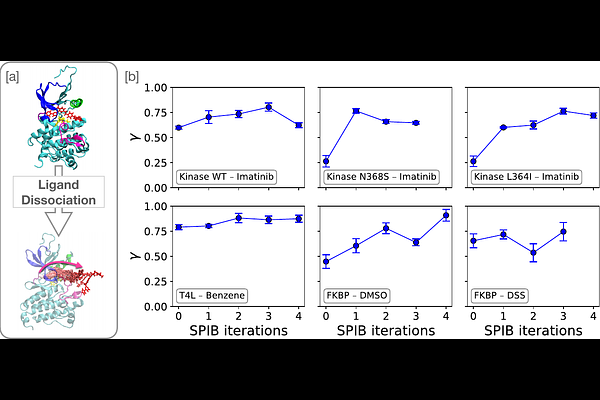Using Time Dependent Rate Analysis to Evaluate the Quality of Machine Learned Reaction Coordinates for Biasing and Computing Kinetics

Using Time Dependent Rate Analysis to Evaluate the Quality of Machine Learned Reaction Coordinates for Biasing and Computing Kinetics
Mazzaferro, N.; Lee, S.; Cossio, P.; Tiwary, P.; Hocky, G. M.
AbstractHaving an accurate reaction coordinate (RC) is essential for reliable kinetic characterization of molecular processes, but there are few quantitative metrics to evaluate RC quality. In this study, we consider the dimensionless {gamma} metric from the Exponential Average Time-dependent Rate (EATR) method, which represents the fraction of a biasing potential along the RC that contributes to increasing the rate constant. We demonstrate that {gamma} can be used to test whether the utility of a reaction coordinate for predicting kinetics with a Metadynamics bias improves as the coordinate is iteratively updated to include new data. We evaluate reaction coordinates approximated via the iterative State Predictive Information Bottleneck (SPIB) approach, which was previously shown to be accurate across six protein-ligand dissociation systems. For these same systems, we compute {gamma} values and mean accelerated times. After systematically scanning over fitting parameters, the results show that {gamma} increases closer to 1, while mean accelerated time decreases, revealing a consistent inverse correlation. These results demonstrate that {gamma} serves as a practical criterion for RC evaluation and offers guidance for selecting SPIB-derived coordinates yielding quantitative kinetic predictions.